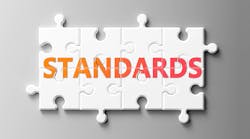By Daniel Young, Toshiba senior manager of product standards and co-author of Industrial Internet Reference Architecture
Changes in digital manufacturing technology are almost too rapid to keep up with, with new software and digitally enhanced equipment entering the market before the industry can reach consensus on best practices.
That’s the precursor for why at the Industry IoT Consortium (IIC), we create guidelines for IoT stakeholders so that there are known standards to follow when introducing products and services. At the forefront of such efforts is the Industrial Internet Reference Architecture (IIRA), which—from the IIC’s website—is “a standards-based architectural template and methodology enabling Industrial Internet of Things system architects to design their own systems based on a common framework and concepts.”
In short, the IIRA does a few things for the industry:
· Defines common industry terms to be consistent across all avenues
· Allows for simpler experience sharing among the industry
· Enables the repurposing of industry building blocks to encourage common baselines
· Reduces cost by providing a starting point for architects of IIoT systems
As a living document, the IIRA is regularly updated to reflect the needs of industry as well as the changing environment of IoT tech. I recently helped author the IIC’s IIRA latest Version 1.10 to account for the changing trends and challenges in industrial IoT. These complexities include the convergence of IT and OT, the emergence of digital twins, the challenges and opportunities with systems comprised of modular parts, and the inclusion of “non-human” digital users, to name a few.
While the IIC leaves its foundational views intact in the reference architecture (business, usage, functional and implementation), the updates include the extension of sections to better address how organizations use these views. The new version also tracks how essential IoT functions map to system-requirement categories, helping those using the guidelines understand which of the listed functions meets their needs.
Additionally, the authors included a new set of architecture patterns that system designers can use to tailor standard system features and implementations. The guidelines also illustrate how system designers can build new system implementations by using different architecture patterns (or overlaying patterns with each other).
While we developed this architecture, we considered feedback from many IIC members who actively use the IIRA and encounter challenges out in the field…challenges that the new architecture seeks to resolve. And though the most obvious audience for the architecture is, of course, IIoT systems architects themselves, any decision-maker in IT or plant management can benefit from it.
It is our hope that the industry will benefit from these updated guidelines to combat the difficulties of a rapidly changing landscape.


